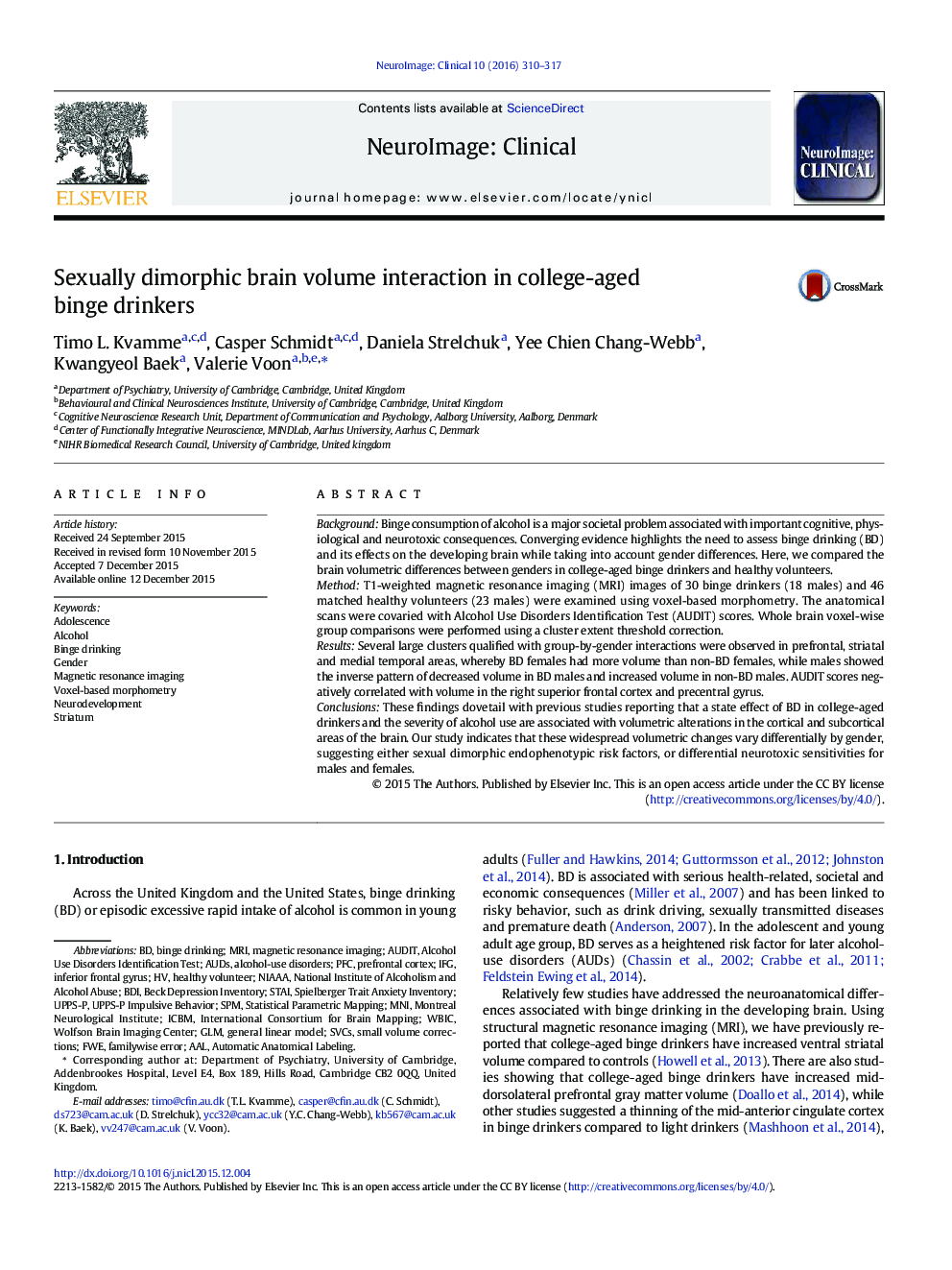| Article ID | Journal | Published Year | Pages | File Type |
|---|---|---|---|---|
| 3074879 | NeuroImage: Clinical | 2016 | 8 Pages |
•We examined brain volumetric differences between genders in college-aged binge drinkers and healthy volunteers.•Gender significantly moderated brain volumetric differences in prefrontal, striatal and medial temporal areas.•The severity of alcohol use in binge drinkers is associated with brain volumetric changes in the superior frontal cortex and precentral gyrus.
BackgroundBinge consumption of alcohol is a major societal problem associated with important cognitive, physiological and neurotoxic consequences. Converging evidence highlights the need to assess binge drinking (BD) and its effects on the developing brain while taking into account gender differences. Here, we compared the brain volumetric differences between genders in college-aged binge drinkers and healthy volunteers.MethodT1-weighted magnetic resonance imaging (MRI) images of 30 binge drinkers (18 males) and 46 matched healthy volunteers (23 males) were examined using voxel-based morphometry. The anatomical scans were covaried with Alcohol Use Disorders Identification Test (AUDIT) scores. Whole brain voxel-wise group comparisons were performed using a cluster extent threshold correction.ResultsSeveral large clusters qualified with group-by-gender interactions were observed in prefrontal, striatal and medial temporal areas, whereby BD females had more volume than non-BD females, while males showed the inverse pattern of decreased volume in BD males and increased volume in non-BD males. AUDIT scores negatively correlated with volume in the right superior frontal cortex and precentral gyrus.ConclusionsThese findings dovetail with previous studies reporting that a state effect of BD in college-aged drinkers and the severity of alcohol use are associated with volumetric alterations in the cortical and subcortical areas of the brain. Our study indicates that these widespread volumetric changes vary differentially by gender, suggesting either sexual dimorphic endophenotypic risk factors, or differential neurotoxic sensitivities for males and females.
